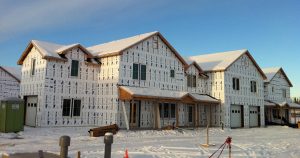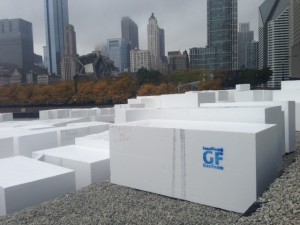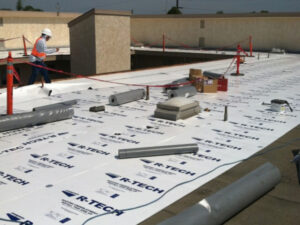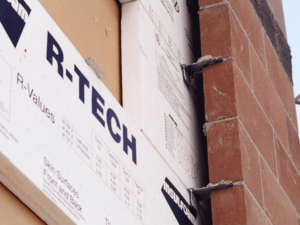Measuring a Residential Exterior Wall’s R-value – EPS above the Rest
Professionals know that when looking to increase a residential project’s insulation, you start with the walls. What often follows is a quick search for “What R-value do I need for exterior walls?” According to The House Designers, “your exterior walls (…) should have a R-value of at least 19.” But as this Insulation Climate Zone Map shows, the R-value may vary widely depending on the project’s location.
Once the R-value is determined accounting for climate, a whole host of products can be used to help raise and maintain that number. Increasingly, builders are turning to closed-cell, lightweight expanded polystyrene (EPS) as their external wall continuous insulation (ci) solution.
Examining continuous insulation (ci)
Since 2012, the IECC has required ci in the building envelope in most Climate Zones (as defined by ASHRAE 90.1) for residential buildings. To help improve the energy efficiency of buildings, the following rigid foam insulations are most commonly used for ci:
- Polyisocyanurate (Polyiso)
- Extruded Polystyrene (XPS)
- EPS
Of these rigid foam insulations, EPS stands apart, with brands like Insulfoam guaranteeing long-term thermal warranty coverage.
Raising R-value with EPS ci
Compared to other rigid foam ci, EPS’ chemical makeup accounts for its stable R-value. EPS insulation consists of tiny cells within a polymer that have already trapped air. Conversely, XPS, polyiso and closed-cell spray foams rely on a gas blowing agent to create a foam via numerous bubbles.
In application, the blowing agent can most certainly enhance the insulation’s R-value. But over time, some of this gas diffuses and is replaced by air. EPS, on the other hand, is expanded with steam and air and therefore maintains a stable thermal resistance throughout its lifetime. This stands in stark contrast to XPS and polyiso, which typically lose up to 20% or more of their insulating capacity during time in service.
Here’s how some of the benefits of EPS play out in residential wall insulation:
EPS insulation benefits
In residential exterior wall applications, rigid foam ci products like EPS reduce thermal bridging, or the escape of energy, through wood studs. As energy auditor Erik North explains: “thermal bridging is compromising the existing wall cavity insulation, meaning that the whole-wall R-value will rise by more than you might think (especially if you base your assumptions on the nominal R-value of the batts inside the wall).”
EPS can further upgrade the thermal insulation value under many types of exterior finishes. It also protects against condensation on the inside wall by keeping the interior of the wall warmer.
Homeowners especially appreciate the benefits higher R-values afford, such as lower electric bills and a more comfortable home environment.
Conclusion
So remember, during your next residential project, EPS can help get your external wall R-value to where it needs to be and stay there.




